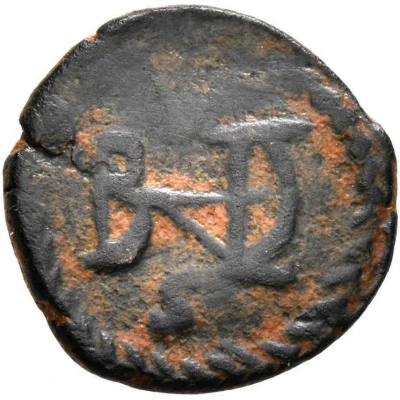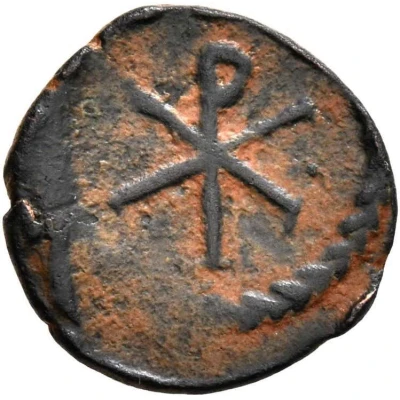


© Leu Numismatik
Nummus at christogram - Theudebert I Marseille
| Bronze | 1.29 g | 14 mm |
| Issuer | Kingdom of Austrasia (Frankish Kingdoms) |
|---|---|
| King | Theudebert I (534-548) |
| Type | Standard circulation coin |
| Years | 534-548 |
| Currency | Denier (670-750) |
| Composition | Bronze |
| Weight | 1.29 g |
| Diameter | 14 mm |
| Shape | Round (irregular) |
| Technique | Hammered |
| Orientation | Variable alignment ↺ |
| Demonetized | Yes |
| Updated | 2024-10-09 |
| Numista | N#331715 |
|---|---|
| Rarity index | 94% |
Reverse
Christogram within wreath.
Script: Latin
Comment
The Provence had been in Ostrogothic possession since the war of 508-511, when an army led by the generals Ibba and Mammo defeated a large Frankish force somewhere in southern Gaul. Soon after Belisar's landing in Italy, however, the hard-pressured Ostrogothic King Vitiges (536-540) offered the Gaulish province to the Merovingians to avoid a war on two fronts, and it is then that the Frankish Kings gained permanent access to the Mediterranean Sea. This coin, which bears the monogram of Theudebert I, King of Austrasia, was struck shortly after these events in Marseille, possibly in the Abbey of Saint Victor, where fourteen of the seventeen pieces recorded by Depeyrot have shown up in an excavation.Interesting fact
One interesting fact about this coin is that it features a rare and unique design element - a christogram, which is a combination of the letters "X" and "P" (Chi and Rho) that represent the first two letters of the Greek word "Christos" (meaning "anointed one"). This symbol was used by early Christians to represent their faith and was often included in coinage during the Byzantine period. The presence of this christogram on the Nummus coin suggests that it was minted during a time when Christianity was becoming increasingly influential in the Frankish Kingdoms.